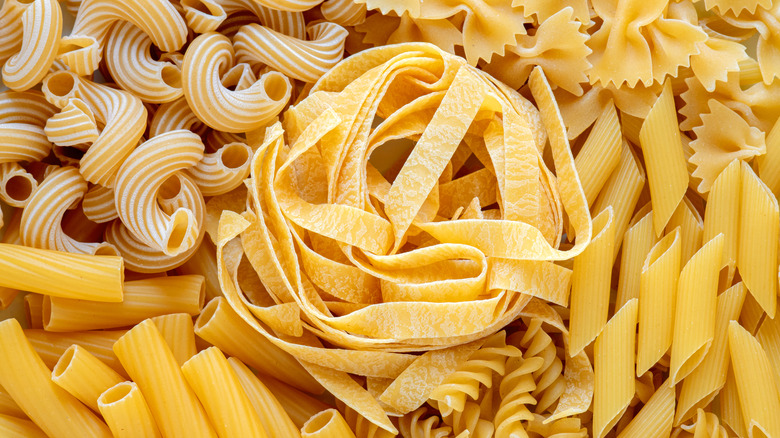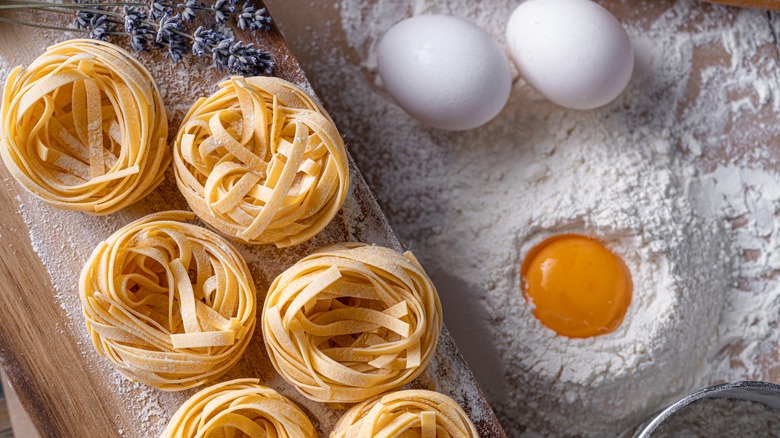The Real Difference Between Fresh And Dry Pasta
There are many different types of pasta and knowing when to use them is important, as each pasta type is best paired with different sauces and toppings. For example, farfalle, thin spaghetti, penne ziti, shells, linguine, and bucatini go well with oil and butter-based sauces (via DeLallo). If you're making a meat sauce, cavatappi, rigatoni, orecchiette, fusilli, tortiglioni, and spaghetti alla chitarra are the best choices. If you're in charge of bringing a pasta salad to a party, elbows, orzo, penne rigate, fusilli, and cavatappi are the best shapes to use.
So it's easy to know which pasta shape should be used with a certain sauce, but when should you use dry boxed pasta versus freshly made pasta? Pasta is pasta so they can be used interchangeably, right? Unfortunately, it's not that simple. Dry pasta and fresh pasta not only have different ingredients but they also should be used in specific applications, just like the various pasta shapes.
Fresh pasta contains eggs while dry pasta doesn't
According to pasta sauce brand Paesana, the ingredients needed to make dry pasta include semolina flour, water, and salt, while fresh pasta requires the same ingredients plus eggs and more water. Because fresh pasta contains eggs, it has to be refrigerated and doesn't stay fresh for long, while dry pasta can be kept in the pantry for a while because it doesn't have any perishable ingredients. On the other hand, fresh pasta cooks up in a matter of minutes, while dry pasta can take up to 12 minutes, per BBC Good Food.
A shorter cook time is great, but fresh pasta isn't always better than dry pasta. Just as different pasta shapes are best suited for certain sauces, the same rings true for fresh and dry pasta. Paesana says that dry pasta is stronger than fresh pasta and is more likely to hold up to thick, chunky sauces.
That being said, when you're making a hearty meat sauce, it's best to reach for dry spaghetti, linguine, rigatoni, or bucatini. Conversely, fresh pasta is best with smooth, creamy sauces that have either milk or butter as bases, such as carbonara or alfredo. Fettuccine, pappardelle, and tagliatelle are best enjoyed as fresh pasta since they are typically tossed in cream-based sauces (via Paesana).
So the next time you're planning to cook pasta, use your sauce as a guide to choose the shape and whether to use fresh or dry.

